Become a better woodworker overnight
The answer isn't better tools or more tools, or even more skills. It's vision.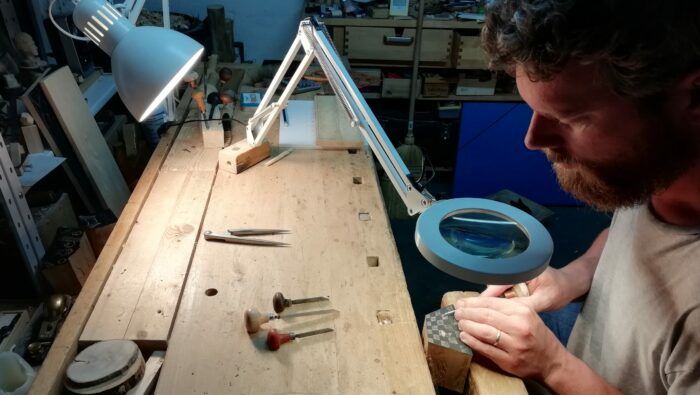
“[M]y eyes are not what they used to be,” wrote Chris Becksvoort when I asked whether he uses any kind of eyesight enhancement for detailed work. And who over the age of 40 can disagree? I had 20/20 vision until my early 40s, when I learned that I could no longer take sharp eyesight for granted. While making a small dutchman patch for a recent job, I realized that one of the best things I can do to improve my woodworking abilities at the age of 62 is not to acquire better tools or add to my skills, but to find some more effective ways to enhance my vision. It’s hard to do fine work when you can hardly see what you’re doing.
The topic of vision enhancement is indisputably important, yet under-examined, at least in woodworking publications. I have found that until I try a product it’s impossible to know whether it will work well or just cause headaches—figurative headaches prompted by disappointment or literal headaches due to new kinds of eye strain.
The basics of better eyesight in the shop
- Prescription eyewear as needed. I wear prescription glasses with progressive lenses. The magnification is inadequate for fine work (such as that dutchman I was working on in June).
- Natural light. A large window at the side of my bench provides good natural light on sunny days, but more windows would be better. Skylights would be the cherry on the cake.
- Shop lighting. Even the best windows won’t provide much help with vision on overcast days, let alone at night. I replaced most of my shop’s fluorescent lights with LEDs several years ago when the bulbs died; they had all been installed at the same time and died within weeks of each other. I have one over the tablesaw and one over my bench, in addition to several others around the shop. More would be better. For job-site work I take an LED photography light with this bulb on a stand; halogen is so hot and blindingly bright that I appreciate the alternative provided by LEDs. But the absolute BEST lighting I have ever enjoyed was during a video shoot with David Thiel from Popular Woodworking; he came with two or three 200-watt incandescent photography bulbs on stands. Yes, they’re energy hogs, being incandescent, but they provide such outstanding illumination that it was almost as good as having my 20-year-old-self’s vision back. While I’m no lighting expert, I’m confident you can get a similar result with LEDs today.
- Magnifying lenses. Years ago I bought an inexpensive visor with a magnifying lens and a second lens that drops down for additional magnification. It only works well if I hold my head perfectly still at just the right distance from the work—not really possible with woodworking. For what it’s worth, the Magnivisor is compact, worn on the head, and made in the United States. Although it has just one 5-star review (and that’s from several years ago), it’s the one I’m probably going to buy the next time I have to do some really fine work. Moveable lighting is helpful for work at specific machines and at the bench; you can read Yoav Liberman’s article about a movable lamp with adjustable illumination here. For my part, if I live long enough, I’m going to invest in the lamp that Laura Mays pointed out in her list of recommendations below.
I know my setup leaves much to be desired, so I asked a few woodworkers, an upholsterer, and a brain surgeon, all of whom do fine work, to share their tricks. The following appear in alphabetical order by surname.
Chris Becksvoort, furniture maker and Fine Woodworking contributing editor
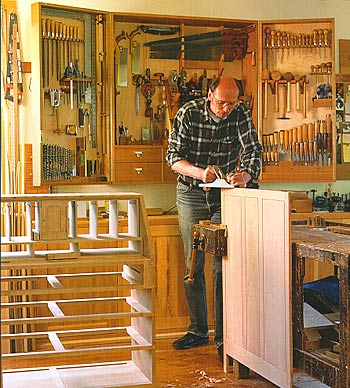
“For 90% of my shop work I manage alright with regular bifocals. They get upgraded every two years. I have a few tricks to compensate for diminishing vision:
“I like to use knife marks for layout work. For example, for precise sawcuts, I make a deep knife scribe, and chisel a slant cut on the waste side, which allows me to set my dovetail saw against that shoulder. That same one-sided notch can also be pushed up against a tooth of the tablesaw blade (obviously before it’s turned on) to accurately register the intended cut.
“Lie-Nielsen used to sell the Magni Focuser (a cheaper version of a more refined glass optic type used by jewelers) which comes with several interchangeable plastic lens inserts. I have three: 1.75x for 14-in. distance, 2x for 10-in. distance and 2.25x for 8-in. distance. With adjustable headband. Nice to have.
“Of course good lighting is essential. I have an LED magnifying articulated task light, which comes with a bushing that fits my 3/4-in. dog holes on my workbench. Essential when doing dovetails. My overhead lights are flush, 6 ft. apart, laid out before I arranged everything in the shop. Consequently, light on the right side of the saw is perfect, while on the left there’s a slight shadow. ”
Rudy Everts, wood carver and chair maker
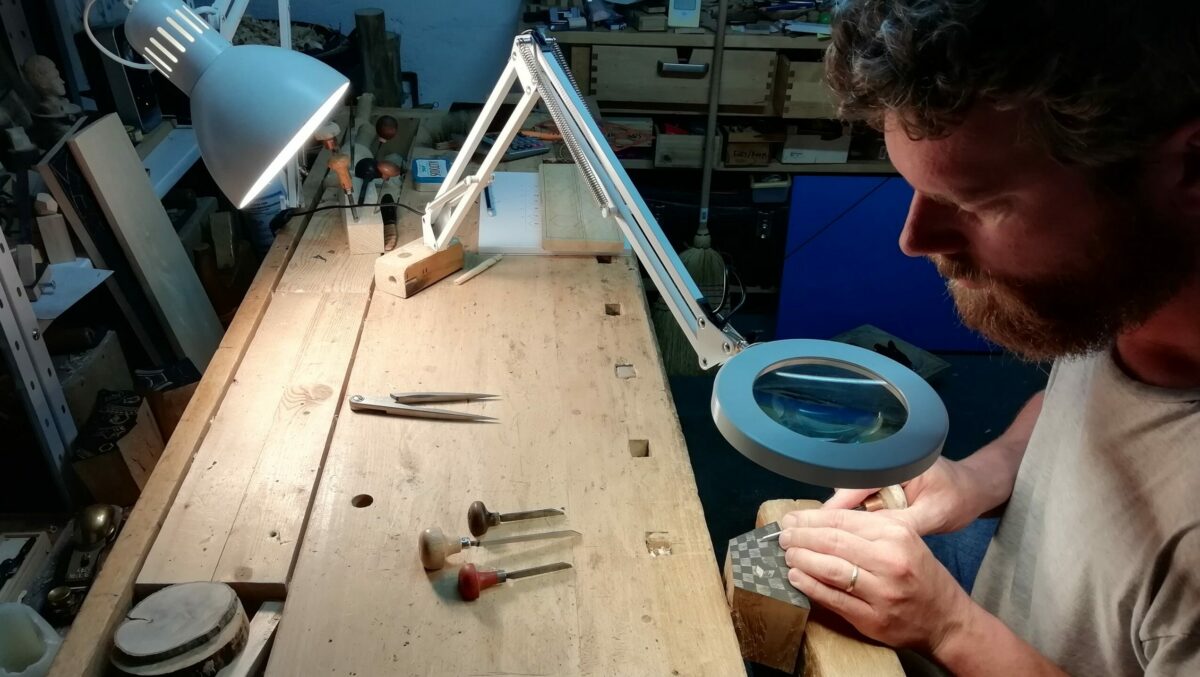
Rudy relies on “lots of light”—a white fluorescent light over his workbench, a spotlight, and a magnifying lamp with which, he says, “you can make superhuman detail that makes people think ‘how the heck did you do that?'”

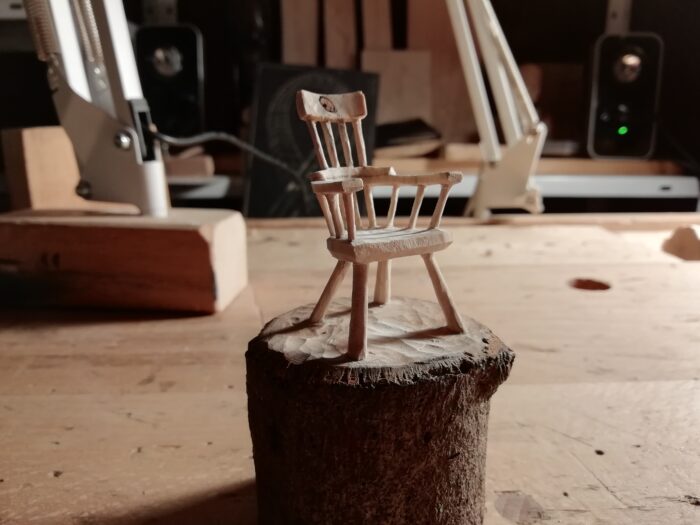
Steve Latta, furniture maker, instructor, and Fine Woodworking contributing editor
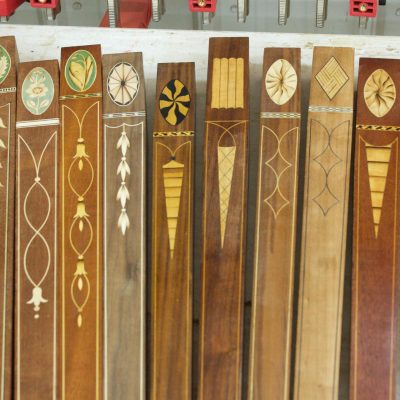
“I have struggled with my eyes for the past decade but feel fortunate that I had good eyes until then,” Steve writes. (Our birthdays are less than a month apart, so I know that Steve and I are the same age. I call him my honorary older brother.) “I have tried progressive lenses and absolutely hated them. People said that I would adjust to them and I did not….period.
“I have a regular pair of bifocals for life and driving and they work pretty well overall. For inlay work, I have a pair of executive bifocals which means basically half the lens is for detail work. The separation line between near and far distances is very high up and runs the full width of the lens. Most bifocals only have a small detail area and I found that I tilt my head up so my eyes can look down. This does not work for me at all when it comes to inlay, joinery, anything with detail. It is just plain annoying.
“For the really close stuff, inlay repairs and such, I put what I call my ‘geek eyes’ on. It is your basic visor that is reasonably priced. I’ve looked through a pair of glasses my dentist uses that are tremendous but the cost is ridiculously high and we chose to have food instead.”
Mike Mascelli, upholsterer and instructor
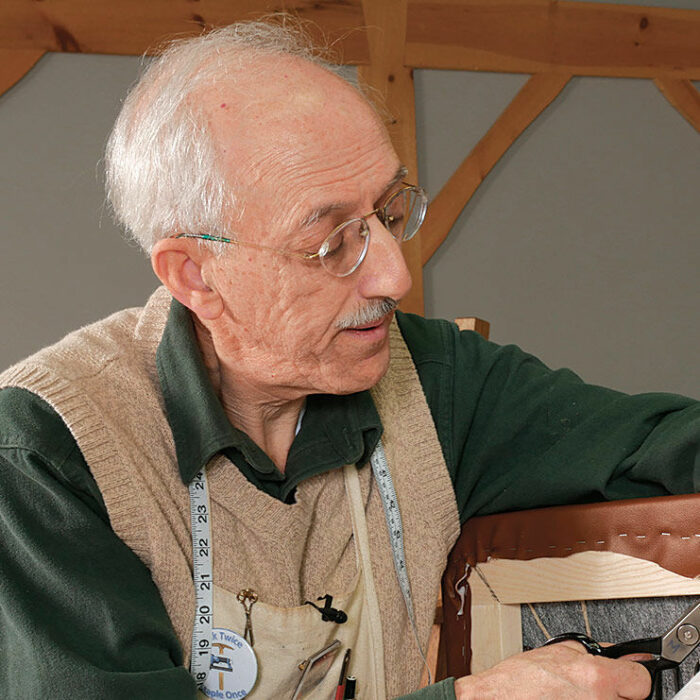
Mike relies on this lighting gizmo for close work.
Laura Mays, furniture maker and director of fine woodworking programs at The Krenov School
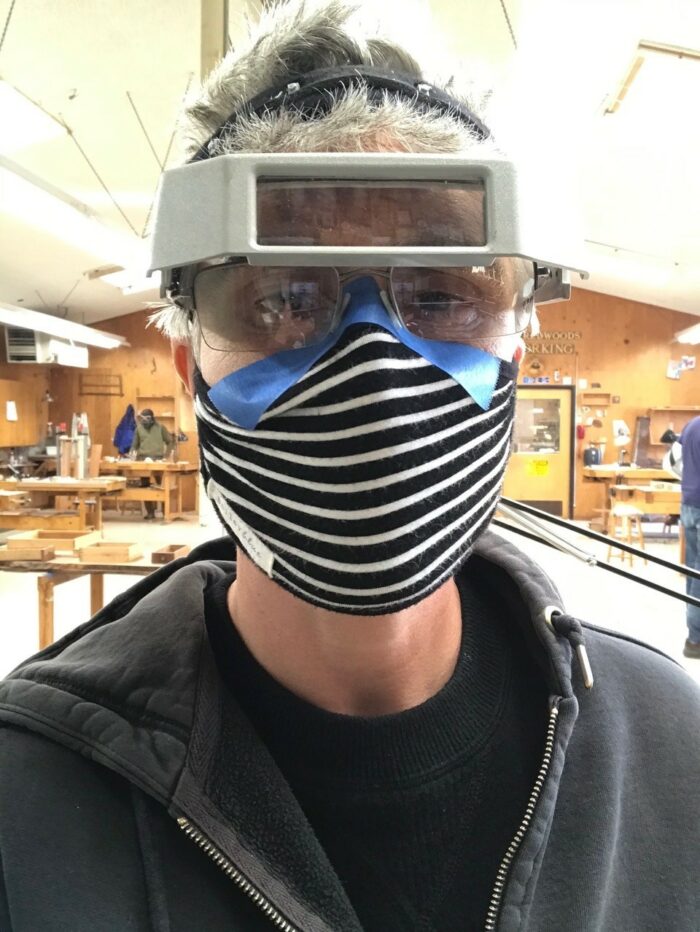
“Ah yes, eyesight,” Laura writes. “Mine took a precipitous fall in my mid-late 40s. Fairly standard but also slightly alarming. It had been excellent up to then. Now I wear bifocals for life and work, with the close part set for quite close work, which means I need a different pair for computer work. The screen is slightly farther away and higher up so I have [a] pair just for that work. I also sometimes wear them when I have to do work higher up, above my shoulders sort of stuff, because wearing the bifocals makes me crank my neck in an awkward way. I do think wearing bifocals has changed my work a bit: I think I now incline to work that is easier to do at the bench, all within the focal range, so smaller.
“And then light. I love the skylight I got in my workshop a couple of years ago, it’s really great light. It faces east so direct light only comes through in the morning. I have a couple of Anglepoises [lamps made for adjustable height and angle] on my bench that I swing around to get raking light or light just where I need it. I was at Paul Reiber’s shop the other day—he’s a carver a few miles away, in his 70s I guess—and he had a wonderful light like dentists use, all weighted and balanced to make it easy to move and stay where it’s put. Now that’s on my wishlist. Something like this.
Michael Puryear, furniture maker and instructor
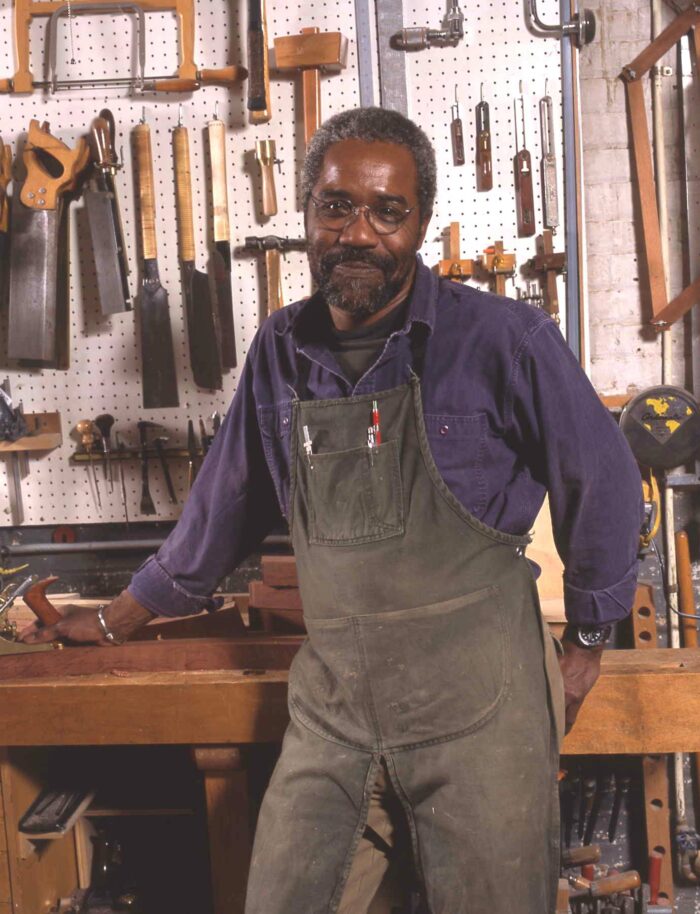
Michael relies on a head-worn magnifier, the Magni Focuser, that allows him to vary the degree of magnification depending on the detail in the work he’s doing.
He also makes a point of having lighting “everywhere”—over his bench, at the lathe, and in any other shop locations where he does focused work. He prefers LED lights and augments them with a swivel lamp directly over the workpiece.
Christopher Schwarz, furniture maker, instructor, writer, and publisher at Lost Art Press

“I have been wearing glasses since the age of 6… And I’m 53. I wear trifocals and that [stuff] is expensive ($400 a pair).
“For enhancing my close-up vision, I keep it simple. I use a 10x loupe with LED lighting, which is a huge help. Here are a couple photos and below is the link on Amazon. Sells for $20 and helps me find nicks in my edge tools and machine knives.”
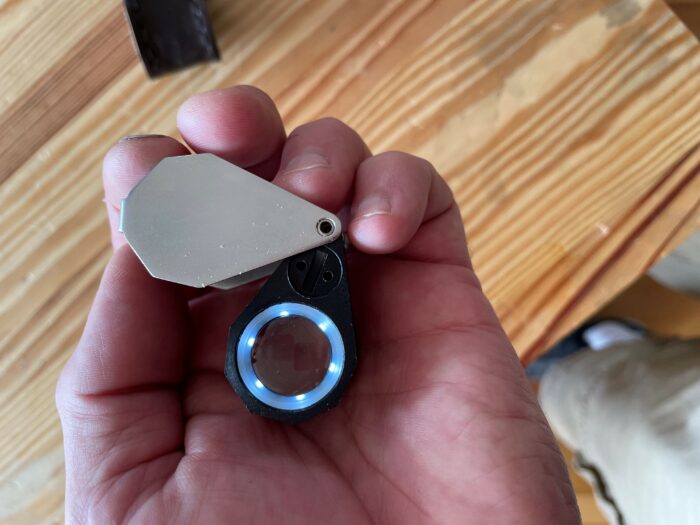
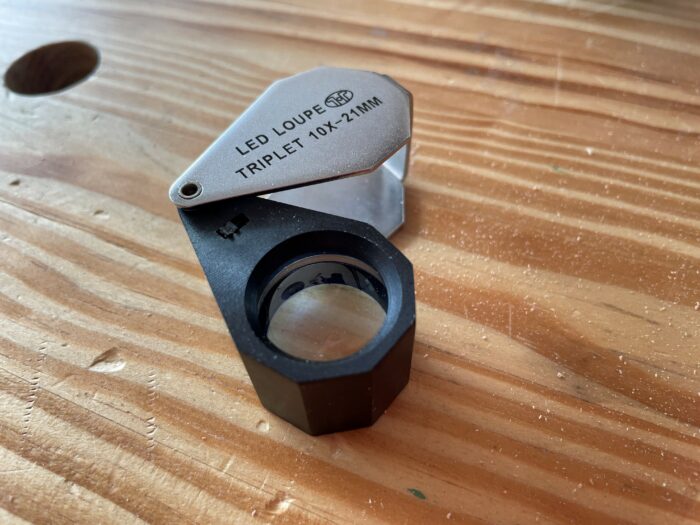
John Scott, surgeon and woodworker
If anyone should know about enhancing vision, it’s a surgeon who operates on patients’ brains. Dr. John Scott is one such professional (even if, being modest and self-deprecating, he prefers to think of himself as more of a glorified plumber who works on blood vessels than a brain surgeon per se). John, too, relies on a magnifying visor, but it’s a basic one along the lines of those mentioned here by others. He was once fitted for an official surgical visor, but he declined to purchase one due to the high cost, as he can see plenty clearly with the more affordable visor.
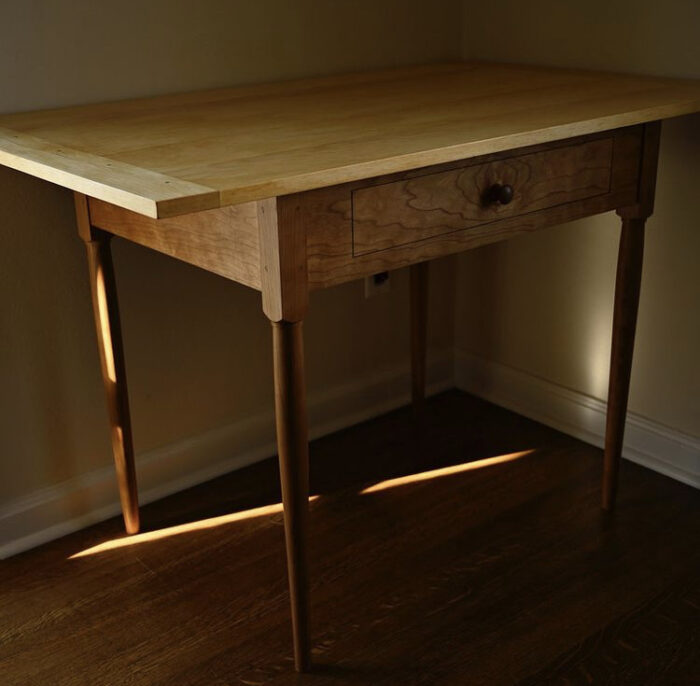
Nancy Hiller is a professional cabinetmaker who has operated NR Hiller Design, Inc. since 1995. Her most recent books are English Arts & Crafts Furniture and Making Things Work, both available at Nancy’s website.

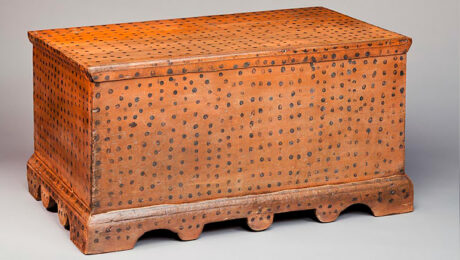
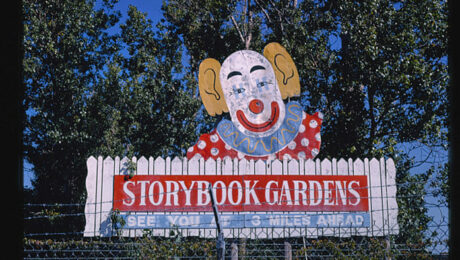
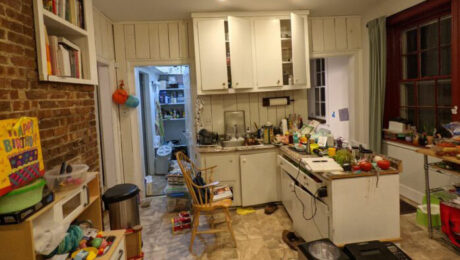
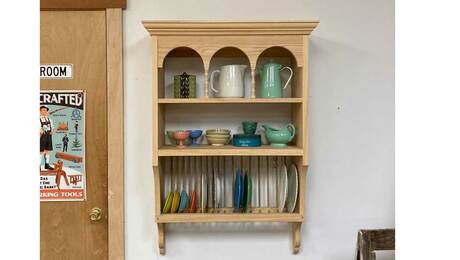


















Comments
How about laser eye surgery? Once my eyes get worst I am strongly considering laser surgery.
I was “blessed” with extreme nearsightedness. Even now at 69, my prescription clocks in at -4.75 diopters. I get the effect of 10x loupe by taking off my bifocals. The problem is that it only works for extremely close work. I take glasses off and on continuously. Plus, I have no protection of my eyes if my prescription safety glasses are sitting on the bench.
Those Magni Focuser are no longer available. Doesn't matter. By far, the best magnifying solution I've found was one that I learned about after working with a Doctor. These MegaView loupes are simple flip-down lenses that sit as a visor. They come with 3 different strength lenses and they allow the clearest view of any detail work. You can shop around but I found these here: https://www.mehta.tools/products/megaview-head-loupe
I use a jewelers loupe that clips on the side of my glasses at the hinge. I find it handy but I went through a few trying to find the right strength. Getting old isn't for sissies.
Laura Mays point regarding special bifocals for woodworking/general shop and light construction work bears repeating. If you can afford them have a pair with impact resistant lenses made with near vision optimized around 16-18" on the TOP half and even closer on the bottom portion. I've had a pair of these for years. They shine when working up under the eaves of a room addition or working on plumbing under a sink. One caution though. Be very careful when wearing them while stepping off of ladders or around power tools--a table saw, for example--since they are always out of focus for anything beyond their optimal ranges.
Thanks for the suggestion of the Magni-visor from MSC. I had been looking for a good quality head band style magnifier, and this one is great. The others I've tried were just toys and broke easily. From your suggestion, I bought the 2X, and it works fine. You can wear it over your regular glasses, but I found that made me nauseous. Everyone's eye sight is different; I take my regular glasses off, and use this instead. It magnifies and gives a really sharp focus. The 2X also gives a wide enough depth of field that I can sit and do bench detail work, like cutting dovetails on drawers, very comfortably. I had no idea how much detail I was missing, until I tried this thing.
Thanks again for the suggestion.
Log in or create an account to post a comment.
Sign up Log in